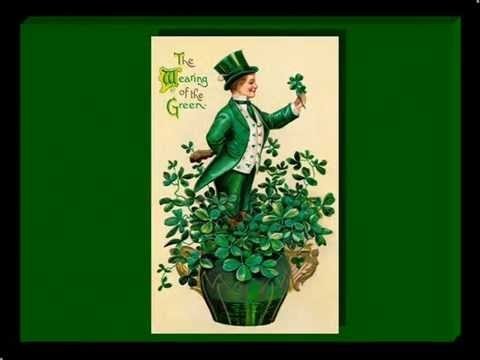Shamrock Trivia: 10 Facts for St. Patrick’s Day
You’re going to see a lot of shamrocks around St. Patrick’s Day. This jaunty three-leafed plant will be on T-shirts, billboards, and even painted on faces. This intrepid little plant will be just about everywhere. Have you ever wondered what you do actually know about the dear old shamrock? Well, whether you’re an expert in all things related to the Emerald Isle or a “sham” when it comes to Irish trivia, you’ll find these little jewels of knowledge entertaining—and educational.
1. Shamrock = the official symbol of Ireland? Well, I’m afraid not. The shamrock is widely associated with Ireland, decorates many Irish books, is carved onto buildings and statues, and features prominently on many organizations that are important in the Irish community. However, Ireland’s official symbol is the harp. This is what appears on government documents, official proclamations, and every kind of certificate and award.
2. The year of the Shamrock shortage! Normally, the shamrock is to be found in abundance throughout the Irish landscape, growing wild in fields, lawns and in grassy verges by the roadside. Due to a bitterly cold winter in 2010, tirfoloin duin, the naturally occurring three-leaf plant usually considered the real shamrock was in very scarce supply. This dire situation was a matter of national media debate in Ireland. People actually resorted to wearing other three-leaved little plants that weren’t shamrocks… We pray to St. Patrick himself that such an awful situation may never arise again.
3. The word shamrock has nothing to do with “sham.” It’s based on the Gaelic word “seamrog,” which means small clover. Diminutive in size though this plant maybe, it’s outsized in its impact on both Irish heritage and on contemporary life.
4. Shamrock is associated with St. Patrick because he supposedly used it is an evangelical message to explain the three elements of the Holy Trinity; Father, Son and Holy Ghost. Ever since then it has been associated with him.
5. Four towns in the US are named after shamrocks, Mount Gay-Shamrock, West Virginia, Shamrock, Texas, Shamrock Lakes, Indiana and Shamrock, Oaklahoma. Unfortunately, Ireland doesn’t have any towns named Shamrock—it might be gilding the lily—or the shamrock, as it were.
6. Ireland’s national airline Aer Lingus, has a shamrock on the tail of all its aircraft. All Aer Lingus use “Shamrock” as their call signal to air traffic control. “Shamrock to ground control, over…”
7. The shamrock was successfully registered as a trademark by the Irish government and is used by official bodies such as Tourism Ireland and Ireland’s IDA (the Industrial Development Authority).
8. The shamrock has been featured in numerous songs and poems, including Thomas Moore’s ballad “Oh The Shamrock“:
Oh the Shamrock, the green immortal Shamrock!
Chosen leaf
Of Bard and Chief,
Old Erin’s native Shamrock!
9. Of all the traditions associated with the shamrock, none is perhaps more iconic (and indeed more popular) than that of “drowning the shamrock.” In its original incarnation, this traditional ritual dates to when the Lenten fasting was strictly adhered to. March 17th was the one day during Lent when the rules were suspended. A shamrock was placed in the last drink of the day, then retrieved and tossed over the drinker’s left shoulder. Finally, the contents of the glass are quaffed to observe Ireland’s feast day with style.
10. Although not poisonous, shamrocks have a sour taste and wouldn’t be consumed. Although some references to the Irish eating shamrocks exist, it seems these were related either people consuming wood sorrel, a similar plant and which is rather more palatable as a foodstuff.
Stoke your Irish pride with more trivia
from my new book, F*ck You I’m Irish.




